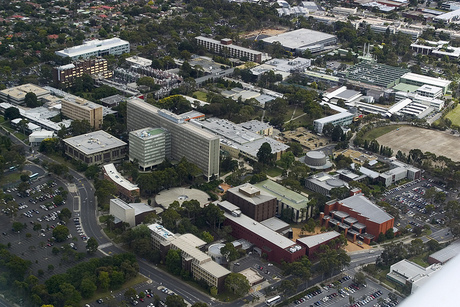Monash project could lead to phones printed on shirts

A new nanoscale laser technology being investigated by Monash University could lead to the creation of mobile phones so thin and flexible that they could be printed on clothing.
Researchers from the university’s Department of Electrical and Computer Systems Engineering have modelled the first ‘spaser’ (surface plasmon amplification by stimulated emission of radiation) to be made entirely from carbon.
Spasers, or nanoscale lasers, emit beams of light through the vibration of free electrons, in contrast to traditional lasers which use space-consuming electromagnetic wave emission.
They can be used as an alternative to transistors in devices such as microprocessors, memory and displays. The technology has the potential to overcome the current limitations on bandwidth and miniaturisation.
Spasers designed to date use gold or silver nanoparticles, whereas the researchers have designed their version using graphene and carbon nanotubes. PhD student and lead researcher Chanaka Rupasinghe said there are many potential advantages to using carbon.
“The use of carbon means our spaser would be more robust and flexible, would operate at high temperatures, and be eco-friendly,” he said. “Because of these properties, there is the possibility that in the future an extremely thin mobile phone could be printed on clothing.”
The project has provided the first demonstration that graphene and carbon nanotubes can interact and transfer energy to each other through light.
Chanaka said spasers also have potential in applications including cancer therapy, as they generate far stronger electric fields than those generated by illuminating metal nanoparticles by a laser.
“Scientists have already found ways to guide nanoparticles close to cancer cells. We can move graphene and carbon nanotubes following those techniques and use the high concentrate fields generated through the spasing phenomena to destroy individual cancer cells without harming the healthy cells in the body.”
IoT demands alternatives as 3G sunset looms
The impending 3G shutdown is a daunting prospect for organisations across ANZ that rely on...
Broadband measurement shows online gaming stacks up
The ACCC's latest Measuring Broadband Australia report has found that consumer connections to...
BlackBerry stopping one cyber attack per minute
A new report from BlackBerry's Threat Research and Intelligence team highlights the...




